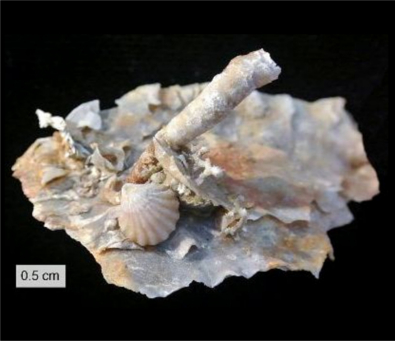- Series:Animals, Fossils, Transcript English
Genesis 1:21
“So God created great sea creatures and every living thing that moves, with which the waters abounded, according to their kind, and every winged bird according to its kind. And God saw that it was good.”
 After more than a century of digging earth’s hills, valleys and plains, paleontologists have uncovered and catalogued more than a billion fossils. Evidence has been found of many plants and animals that are extinct today. However, no evidence has ever been found showing new plants or animals developing.
After more than a century of digging earth’s hills, valleys and plains, paleontologists have uncovered and catalogued more than a billion fossils. Evidence has been found of many plants and animals that are extinct today. However, no evidence has ever been found showing new plants or animals developing.
The new creatures discovered for the first time in the fossil record usually fit into a known phylum. Recently, however, paleontologists working in northern Greenland announced their discovery of a strange, extinct creature. The five-and-a-half-inch-long creature was so strange that it does not seem to fit into any known phylum. Paleontologists have given the fellow the name “Grasper” because it has a pair of appendages sticking out the front that may have been used to grasp things. The body has been described as being shaped something like a spiny postage stamp. It had gill-like flaps along each side and bumps along the back. Grasper also had a set of spines sticking out from its back. Only one complete skeleton of the creature has been discovered, but scientists have about 50 partial skeletons.
Paleontologists also report a number of other strange animals at the site that do not fit into any phylum. One looks like a swimming vacuum cleaner.
The fossil record offers us some surprising examples of God’s creativity. The fossil record doesn’t offer any evidence that the creatures alive today developed from other creatures. Author: Paul A. Bartz
Prayer: Father in heaven, give Your people understanding and help us not to fear what we might learn from new knowledge, but help us learn how to sort true knowledge from interpretations offered by those who reject Your truth. In Jesus’ Name. Amen.
REF.: Monastersky, Ronald. 1992. “Evolutionary oddball surfaces in Greenland.” Science News, v. 142, July 11. p. 22. Photo: Silicified (replaced with silica) fossils from the Road Canyon Formation (Middle Permian of Texas). Courtesy of Wilson44691. (CC BY-SA 3.0)
